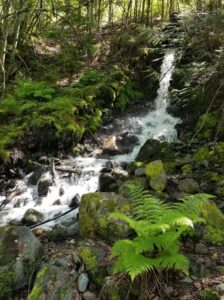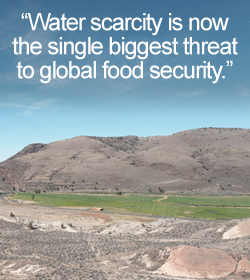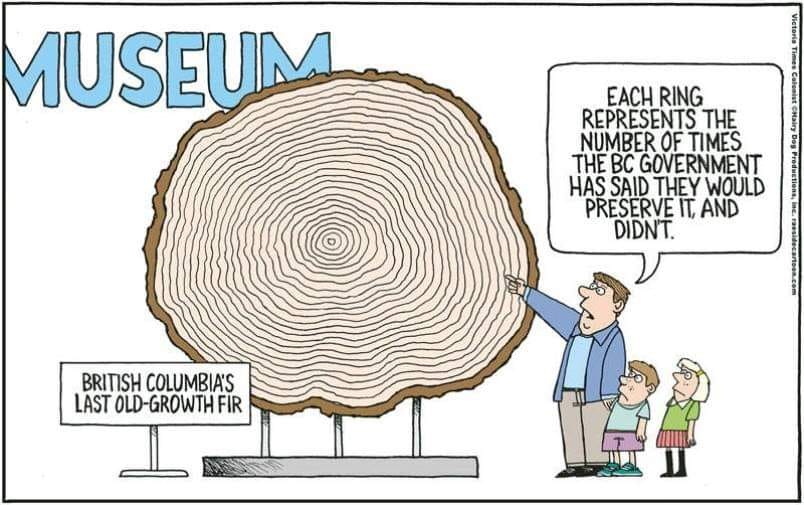 The main reasons we bought our house two decades ago was for the lush forested setting and the clean creek drinking water. Located in the interior of British Columbia on a north facing slope, the previous owner touted two great things about the house, great mountain fresh chlorine-free water and air conditioned in the Summer thanks to all the surrounding trees. Although the previous owner bragged about being able to drink right out of the creek, we installed a series of sediment and UV filters as required by law (and also to safeguard our family from giardia etc.).
The main reasons we bought our house two decades ago was for the lush forested setting and the clean creek drinking water. Located in the interior of British Columbia on a north facing slope, the previous owner touted two great things about the house, great mountain fresh chlorine-free water and air conditioned in the Summer thanks to all the surrounding trees. Although the previous owner bragged about being able to drink right out of the creek, we installed a series of sediment and UV filters as required by law (and also to safeguard our family from giardia etc.).
Then, during one particularly cold snap in February (-20 C for a week) our water lines froze. We had no water for 3 months, which meant no laundry, no showers and long trips to our creek to chip the ice and pull water out and filter it. We would go into town to do laundry, shower/shave and bathe at the community center. For a family of four with two young kids, having no water was no picnic. Once March rolled around with pipes still frozen, we couldn’t take it anymore and left town down south for a month.
Being near water and in forests has been scientifically proven to lower blood pressure and improve your health (read “Blue Mind” by Wallace Nichols). When I first heard that our watershed was being logged almost a decade ago, my blood pressure instantly began to rise. I had to find out what I could do to stop this. I called up the local Forestry Office to set up a meeting. I was shocked by the bullet-proof glass and high level of security I had to pass through to get in.
Upon meeting with a Kootenay region manager, I asked “How can logging companies be allowed to log in government designated watersheds?”. He laughed. I asked, “What’s so funny?” He responded, “Where do you think we get our wood?”. And so it began. He told me they “just approve the logging permits” and that it’s up to the timber company to work with the community to resolve issues. The logging company also is responsible for hiring their own consultants and hydrologists (aka in the industry as “Professional Reliance”). I suggested that seemed to be a clear conflict of interest. He laughed again.
 Every year we see our creek levels getting lower by the end of the season. Climate change is in part to blame for hotter and drier summers putting our water supply further at risk. However, with the humid forest canopy of our Inland Temperate Rainforest removed by logging, the creek flows are further exposed to dry out. Moist soil from biodegraded leaves and bark is desperately needed to hold onto the water from rain and snow and slowly release it into the creek bed over time. Now we see more sedimentation year-round, especially during the Spring freshet when we have weekly clogs of our intake and filters.
Every year we see our creek levels getting lower by the end of the season. Climate change is in part to blame for hotter and drier summers putting our water supply further at risk. However, with the humid forest canopy of our Inland Temperate Rainforest removed by logging, the creek flows are further exposed to dry out. Moist soil from biodegraded leaves and bark is desperately needed to hold onto the water from rain and snow and slowly release it into the creek bed over time. Now we see more sedimentation year-round, especially during the Spring freshet when we have weekly clogs of our intake and filters.
“Of the 15 climate risks identified in B.C.’s 2019 Strategic Climate Risk Assessment, the majority are influenced by logging. “
The timber export company is again planning selective and clearcut logging in our creek despite it being a government designated drinking watershed. The logging company actually won “Exporter of the Year” in 2017 and sends over 80% of our local wood over the border to the US as plywood. They claim “the forest feeds our family” as they rob from ours. They say that they must get in there to remove the pine beetle wood and reduce forest fire risk. Local forest, ecology and biologists all agree that the reverse true. Logging (selective or clearcut) actually increases fire risk by destroying the humid forest canopy. Increased UV rays dry out the forest floor and destroy vital soil humus and organisms. Animals who spread seeds to diversify forest growth among coniferous and more fire resistant deciduous trees are driven away. Burning wet slash piles also pollutes our troposphere (the 20km thick layer of fresh air we breath) . Pine beetle infested trees are only briefly an elevated fire risk before they drop their needles, and are a huge asset (and carbon sink) to adding vital nutrients to the forest floor when they decompose. Peter Wood, a PhD in Forest Biology has confirmed all of this and more in his paper “Intact Forests, Safe Communities”.
In fact forestry in B.C. is a net loss for the economy that costs taxpayers half a billion dollars a year. Forestry jobs are notoriously dangerous with mill accidents, logging truck deaths and poor air quality lung complications and cancers. According to the BC government statistics, 50% of logging truck drivers are smokers, and 60% are obese, working shifts on averages of 13 hours. I have a family member who died young from effects of a poor air quality in his mill in norther B.C.

Victoria and Vancouver watersheds are all protected. That’s over 2.5 million people with safe water and zero logging allowed in their watersheds. Over 85% of BC residents rely on surface fed drinking water from creeks.
In the interior Kootenays however, mining, clearcut logging, heavy machinery, road building and burning slash piles are allowed in any watershed that is not a park. This is all based on the Mines Act (drafted in 1996), Forest & Range Practices Act (drafted 2002) and the Forestry Act (drafted 1996), all written before climate change was considered a “thing”. We need to protect our forest ecosystems in order to protect our water and air and general well being. When the creek or well runs dry, you will know the worth of water. We are mostly water, and water is life.
Sincerely,
Chris Charlwood – Founder, Canopy Labs Ltd.
LinkedIn Profile

